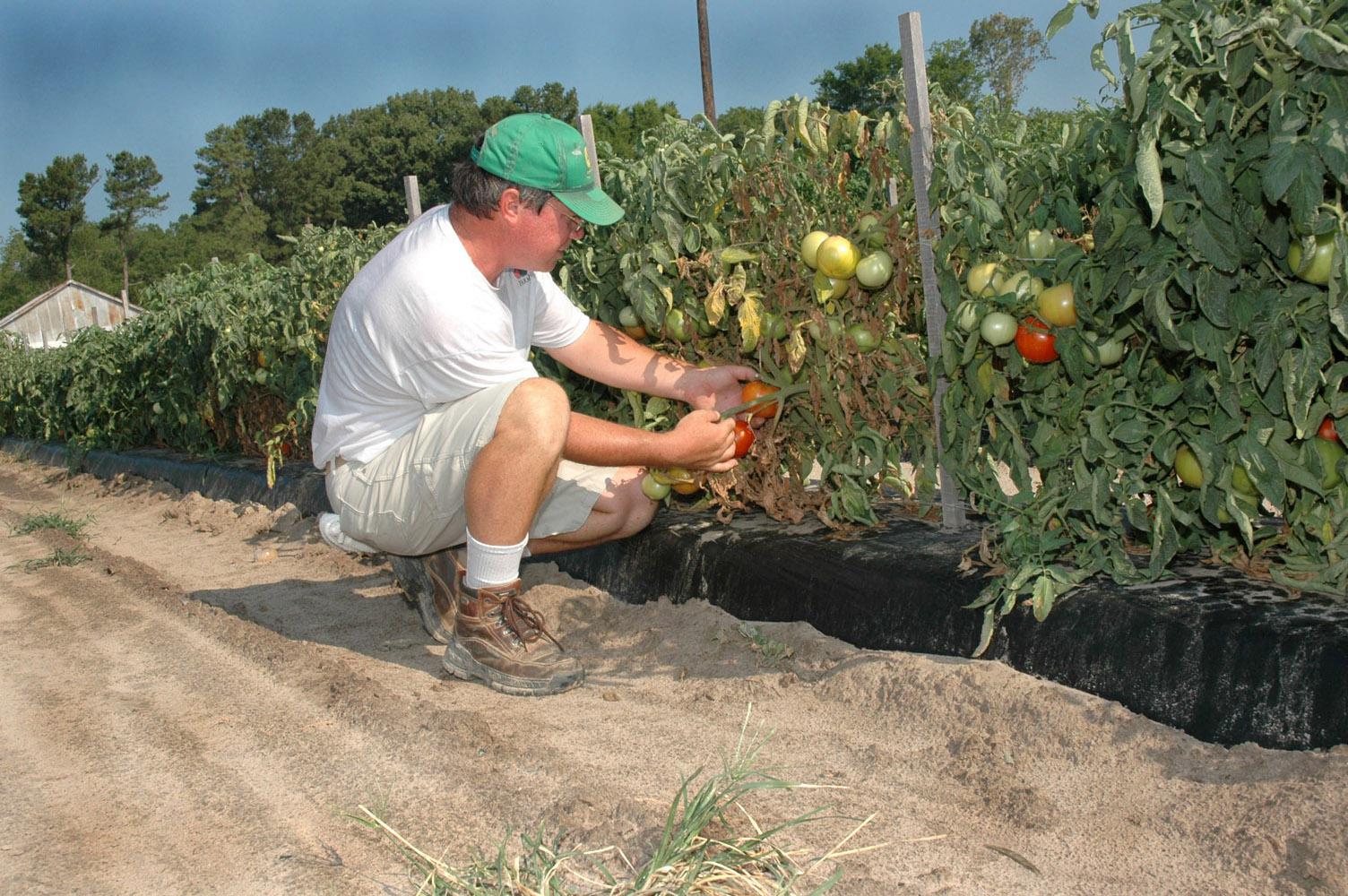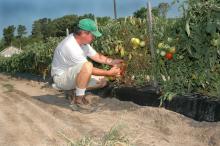Information Possibly Outdated
The information presented on this page was originally released on June 23, 2006. It may not be outdated, but please search our site for more current information. If you plan to quote or reference this information in a publication, please check with the Extension specialist or author before proceeding.
Commercial tomatoes depend on irrigation
MISSISSIPPI STATE -- Dry weather throughout the early growing season has commercial tomato growers thankful for fewer foliar diseases, less tomato spotted wilt virus and their irrigation systems.
“Almost all of Mississippi's commercial tomatoes are grown with drip irrigation, so they are doing well,” said David Nagel, horticulturist with Mississippi State University's Extension Service. “Some growers in north Mississippi still have had a challenge keeping up with water demands because of the northerly winds.”
Nagel said dry conditions have helped the state's 800 acres of tomatoes by reducing neighboring weeds that host thrips, which spread tomato spotted wilt virus.
“The virus is present, but not at the epidemic levels we have seen in some past years,” he said. “As the season progresses, the threat will increase. Growers will need to remove infected plants quickly to reduce the spread of the virus.”
Nagel said non-commercial tomato growers who lack irrigation sources have had more problems with blossom-end rot. This problem is a calcium deficiency brought on by a lack of water.
“Once the fruit develops a leathery spot that is either dark brown or black, it should be removed from the plant and used for another product like fried green tomatoes or chow-chow. Growers then know their plant needs more water to avoid additional loss of fruit,” Nagel said.
Mel Ellis of Mayhew Tomato Farm in Lowndes County said no two years have been alike in the nine years he has been in the truck-crops business. He said he feels more prepared than most people for dry weather.
“I've seen enough to know when you start seeing signs of drought, it is time to add water. We started pumping water in early May this year,” Ellis said. “We have lost about 20 percent of our crop located in parts of the field where the irrigation does not reach. Otherwise, it's been a pretty healthy crop. There's no fungus when it doesn't rain.”
Ellis said portions of his fields still have struggled when the water table dropped below the root systems. Those conditions have caused some plants to defoliate. Other fruit losses have occurred from sun scalding.
“You are always going to lose some to one thing or another,” Ellis said.







